Wanna learn the names of planets in Japanese? Read on to find out what are the names of all the 8 planets in Japanese.
Space is an intriguing topic and nobody ever gets tired of learning new facts about our solar system. However, have you ever wondered what the planets in our solar system are called in Japanese?
Well, that’s what we’re here to find out, make sure to read the entire article below to know the names of planets in Japanese!
One of the most fascinating facts about our universe is how vast it is that it’s able to hold several bodies like planets, stars, meteorites, satellites, and whatnot.
- Related: Days, months and years in Japanese
Although as human beings we’re destined to live on planet Earth, we’ve managed to travel across space and learn about other planets as well.
Most of us are aware of the names of planets in English but what are they called in Japanese? If you’re eager to learn the names of planets in Japanese then read further to know more.
Names of the planets in Japanese: Quick Glance
| Planets in English | Planets in Japanese | Planets in Japanese Translitered |
| Mercury | 水星 | Suisei |
| Venus | 金星 | Kinsei |
| Earth | 地球 | Chikyu |
| Mars | 火星 | Kasei |
| Jupiter | 木星 | Mokusei |
| Saturn | 土星 | Dosei |
| Uranus | 天王星 | Ten’nosei |
| Neptune | 海王星 | Kaiosei |
Names Of Planets In Japanese
The names of the planets in Japanese are written in kanji characters and these kanji characters are ideograms which means they have a variety of deep meanings just like how deep space is.
Thus the names of planets in Japanese are based on ideograms that represent the essence of nature.
This means that the names of the planets in Japanese are pretty much based on the natural elements of the planet itself such as its shape, size, appearance, chemical composition, the position of the planet, etc.
A notable fact regarding the names of planets in the Japanese language is that the kanji letter 星 is used after most planet names. This is the “Star” kanji (星) that can either mean “star” or “planet” in the English language.
Hence why most planets have this kanji letter (星) in the end as a suffix which basically indicates that a planet or star is being mentioned.
Now let’s learn the names of the planets in our solar system and how they’re pronounced in Japanese.
- Related: Meaning of Mono and Koto in Japanese
水星 (Suisei) - Mercury
Let’s begin with the first planet of the solar system like we always should. Mercury is the smallest planet out of the 8 planets in our solar system and also the closest planet to the sun.
Mercury is written in Japanese with two kanji letters (水星) and it’s pronounced in Japanese as “Suisei”.
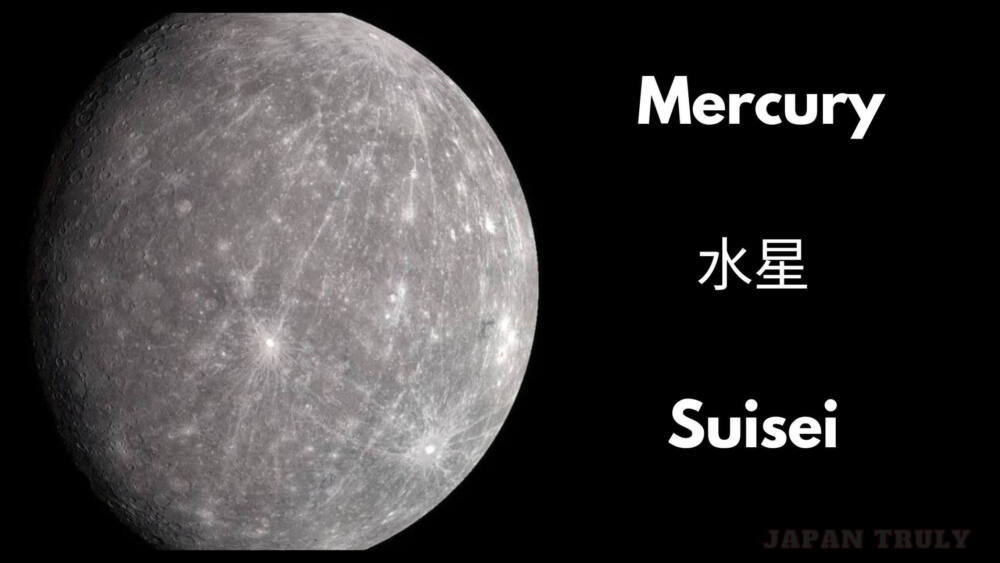
The first kanji letter (水) means “water” in English and the second kanji letter is (星) the star kanji which we mentioned above.
This kanji letter (星) also means planet in English hence the English translation of both the kanji letters (水星) is the “water planet”. This is because Mercury has water on its surface which is in the form of ice.
金星 (Kinsei) - Venus
Venus is the second planet in the solar system and also the planet that’s closest to Earth in orbit. Venus is also known as the “Golden Planet” due to its bright yellow color that makes it look like a massive glowing ball of gold.
In kanji letters, Venus is written as (金星) and it’s pronounced as “Kinsei”.
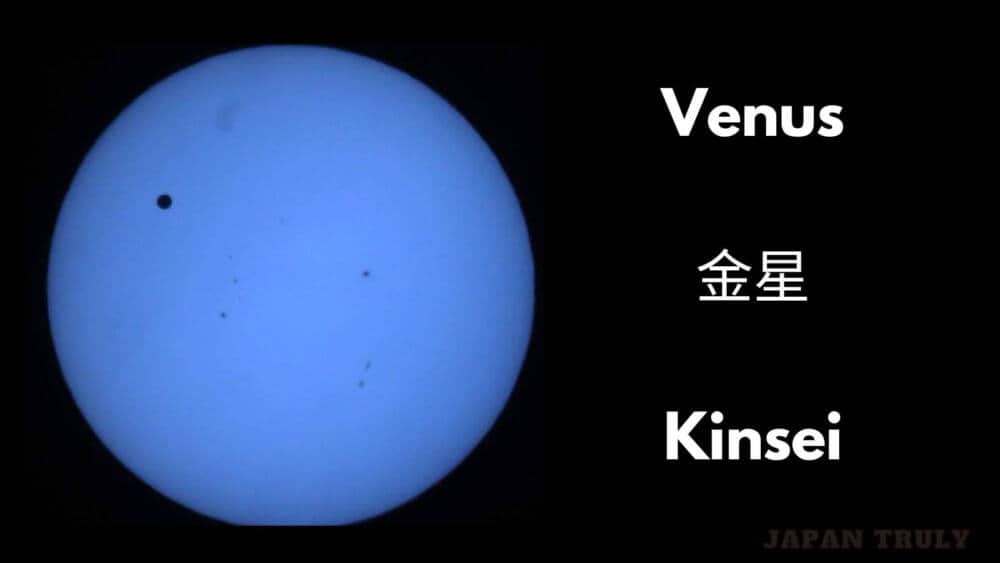
The first kanji letter (金) means “money” or “gold” in English and the second kanji letter (星) means planet. Once put together the kanji letters are translated to English as the golden planet, interestingly another name for Venus.
地球 (Chikyu) - Earth
The only planet habitable for human life, our home, Earth is the third planet from the sun in the solar system. Earth is the only planet in the solar system that contains water, with the perfect atmosphere, and an environment for humans to live in. Earth is written in Japanese kanji letters as (地球) and it’s pronounced as “Chikyu”.
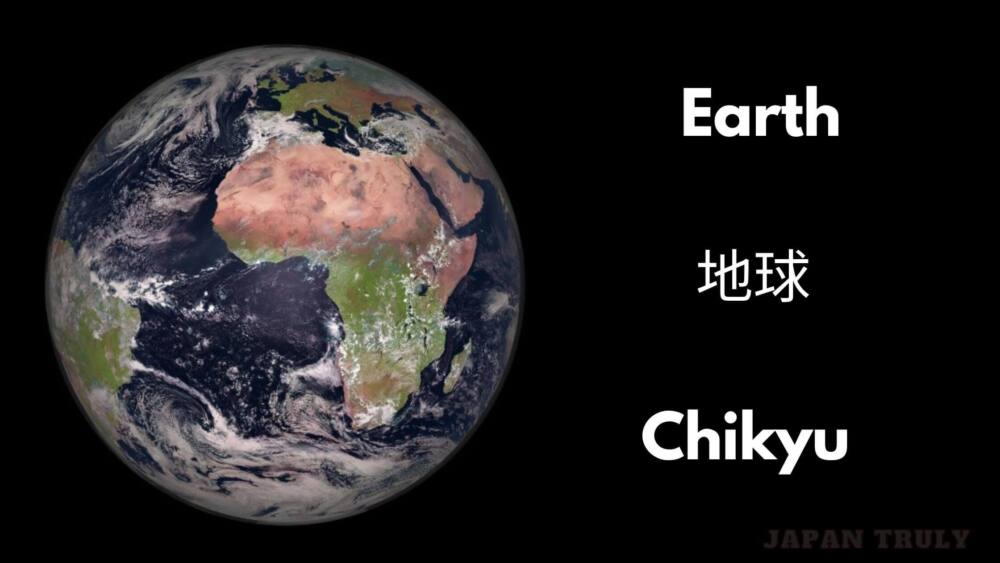
The first kanji letter (地) means “ground” or “sand” in English and the second kanji letter (球) means “ball”. When put together the kanji letters would ultimately mean “sand ball” or “ground ball” which represents the rich fertile soil of Earth.
火星 (Kasei) - Mars
Mars is the fourth planet in the solar system and the planet that’s rumored to have been inhabited by aliens, a fact or a conspiracy theory, depending on which side you’re on. Mars is also nicknamed to be the “Red planet”, thanks to its bright red soil which gives the planet its color.
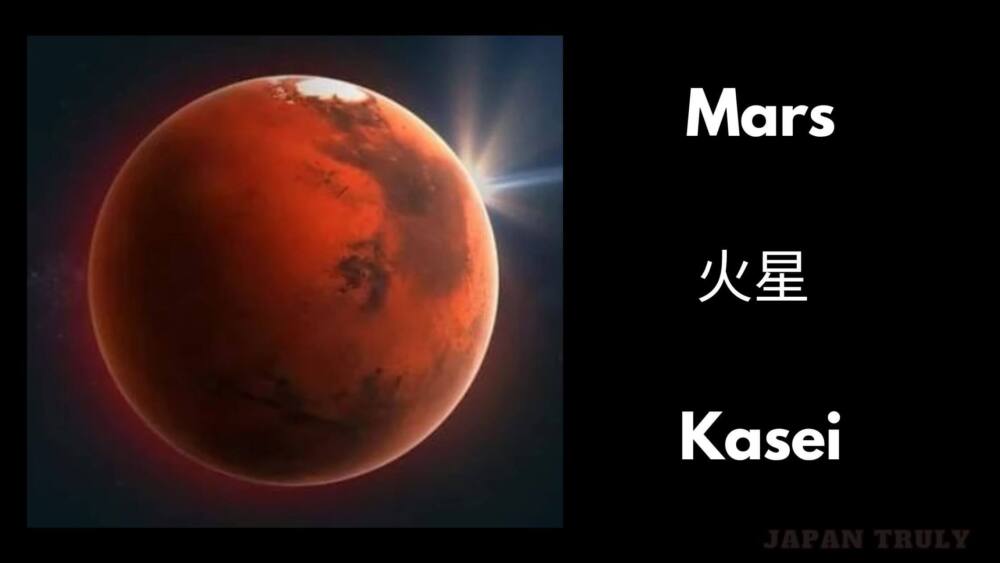
Mars in Japanese is pronounced as “Kasei”. The first kanji letter in Mars (火) means “fire” or “lit” and the second kanji letter (星) means planet.
This makes the literal translation of (火星) Kasei, “the fire planet”. The reason Mars is referred to as the fire planet is due to its bright red color.
- Related: Meaning of Ara Ara in Japanese
木星 (Mokusei) - Jupiter
Jupiter is the largest planet in the solar system and is the only planet known to have the highest number of moons.
Jupiter is also one of the gaseous planets in the solar system which also has the highest level of gravity compared to other planets. Jupiter is written in kanji letters as (木星) and it’s pronounced as “Mokusei”.
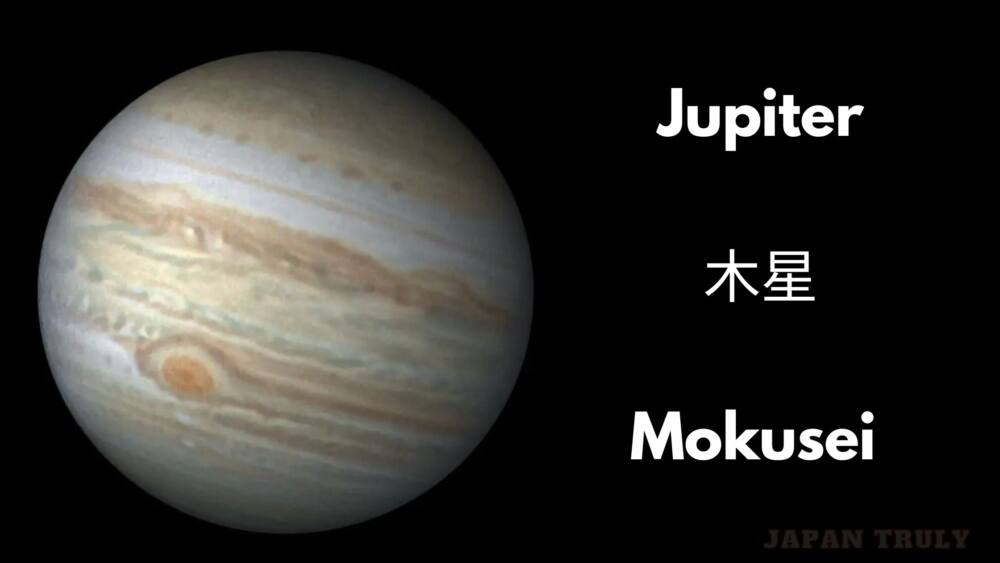
The first kanji letter in Jupiter (木) means “wood” and the second kanji letter (星) means “planet”.
When both the kanji letters are put together 木星 they’re translated as “the wood planet”. This makes sense because Jupiter has the appearance and the colors of wood.
土星 (Dosei) - Saturn
Saturn is the sixth planet from the sun in the solar system and it’s quite popular for being surrounded by a ring.
The rings in Saturn are merely made up of asteroids, chunks of comets, and fragments of exploded moons. Saturn also has a high number of moons but not more than Jupiter.
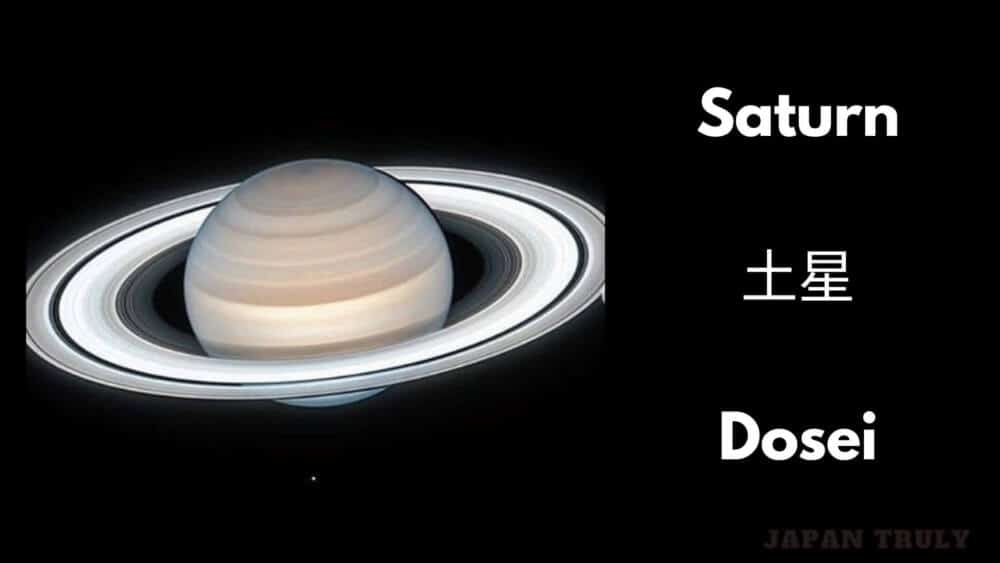
Saturn is written in kanji letters as (土星) and it’s pronounced as “Dosei”. The first kanji letter in Saturn (土) means “soil” and the second kanji letter (星) means “planet”.
Ultimately, the English translation of the kanji letters (土星) is “soil planet”. There’s no clear indication why Saturn is referred to as the soil planet.
天王星 (Ten’nosei) - Uranus
Uranus is the seventh planet from the sun in the solar system and it’s also the planet that has featured in countless memes due to wordplay.
Uranus is also a large planet that’s surrounded by rings. Uranus got its name inspired by the grandfather of Zeus in Greek mythology.
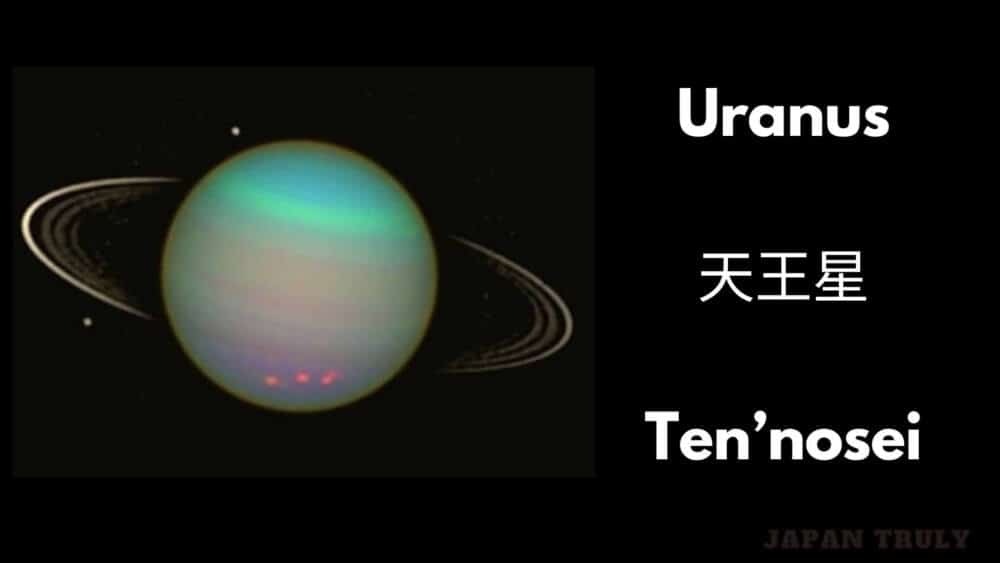
Uranus has three kanji letters (天王星) and the word is pronounced as “Ten’nosei”. The first kanji letter (天) in English means “Heaven”, the second kanji letter (王) means “King”, and the third kanji letter (星) means “Planet” as usual.
The reason why Uranus is referred to as the “Heaven king planet” is due to its beautiful blue color which represents heaven.
海王星 (Kaiosei) - Neptune
Neptune is the eighth and last planet of the solar system and the farthest planet from the sun. Neptune is slightly larger than Uranus and also the fourth largest planet by diameter.
It’s also the coldest planet in the solar system due to sunlight barely reaching the planet. Thus Neptune is mostly covered with icy glaciers.
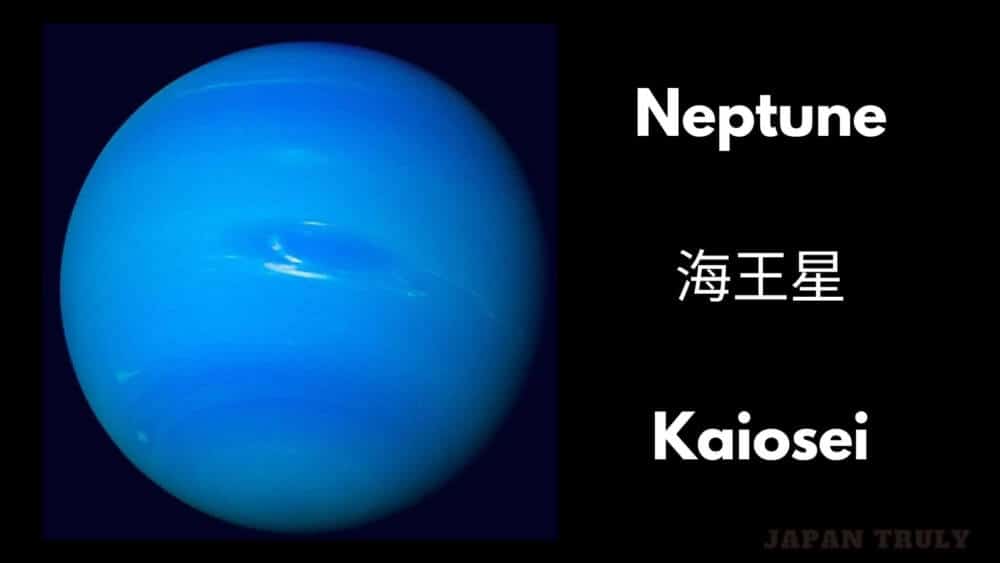
Neptune is pronounced as “Kaiosei” in Japanese and has three kanji letters. The first kanji letter (海) means “Sea”, the second kanji letter (王) means king, and the third kanji letter means “planet”.
As a result, Neptune finally translates to the “sea king planet”. The reason behind Neptune being referred to as the sea king planet is due to its name being derived from the Roman god of seas.
Is Pluto Still A Planet?
We’ve covered most of the planets of our solar system but there’s still one planet that needs to be mentioned and that’s Pluto.
Right after 2006, Pluto was regarded as a dwarf planet due to it not meeting one of the three criteria designed by the International Astronomical Union (IAU).
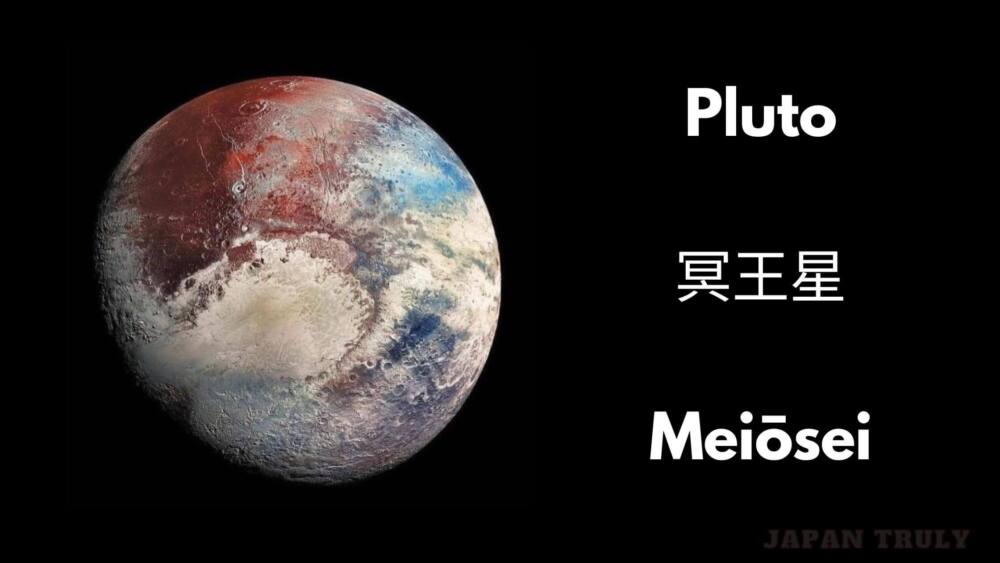
However, Pluto was one of the planets and it is still in our solar system so it’s worth being discussed. Pluto in Japanese kanji characters is written as (冥王星) and it’s pronounced as Meiōsei.
The first kanji letter (冥) means “Darkness”, the second kanji letter (王) means “King” and the third kanji letter (星) means planet.
The final English translation of the kanji letters is the “darkness king planet”. The inspiration behind Pluto’s name is the Roman god of death hence the innuendo for darkness.
You can also learn how to pronounce the Japanese names of planets by simply watching the video below.
Names Of Other Solar Bodies And Elements In Japanese
We’ve covered the names of the planets in our solar system and now it’s time to learn about the Japanese names of other solar bodies in our solar system. There are countless objects, matter, and bodies in space that some aren’t even named yet. However, we’ll learn the names of the closest and most obvious objects that we know of.
| Names Of Other Solar Bodies And Elements In Japanese | Pronunciation | Meanings |
| 天の川 | Amanogawa | The Milky Way Galaxy |
| 銀河系 | Gingakei | Galaxy |
| 宇宙 | Uchuu | The Universe |
| 重力 | Juryoku | Gravity |
| 大気 | Taiki | Atmosphere |
| 軌道 | Kidou | Orbit |
| 小惑星 | Showakusei | Asteroid |
| 流星 | Ryusei | Meteor |
| 日食 | Nisshoku | Solar eclipse |
| 月食 | Gesshoku | Lunar eclipse |
| 月 | Tsuki | Moon |
| 太陽 | Taiyo | Sun |
Names Of The Planets In Japanese: FAQs
What is the Japanese name for Venus?
What do the Japanese call Jupiter?
What is Mars called in Japan?
Also Read



